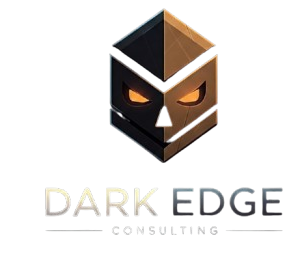Healthcare Security Solutions: Why the Industry Needs a Bold New Approach
In today’s rapidly evolving digital landscape, the healthcare industry is grappling with cybersecurity challenges, putting medical data at risk. Relying on outdated methods no longer provides adequate protection for patient information. Therefore, a new approach in healthcare IT security solutions is crucial, providing organizations with clear and effective strategies. This document explores why robust healthcare IT security is essential and how we can prevent data breaches to protect the future of medical data. Let’s concentrate on efficient healthcare cybersecurity strategies while cutting through the noise.
The State of Cybersecurity in Healthcare
Current Security Challenges
The healthcare sector faces numerous security issues that jeopardize sensitive data. As technology advances, so do cybercriminal tactics. The reliance on outdated systems is a significant problem since they can’t cope with modern threats and often miss crucial updates and patches. Cybercriminals frequently target healthcare facilities for ransomware attacks, given the urgent need for data access. Moreover, the rapid adoption of IoT devices increases the risk, as these devices often lack proper security protocols. To address these challenges, the industry must invest in comprehensive security solutions and update frameworks. Partnering with firms like Dark Edge Consulting can significantly enhance the protection of sensitive data.
Data breaches have consequences that extend beyond immediate financial losses. They compromise patient privacy by exposing details, such as medical histories and social security numbers, leading to identity theft and long-term harm to individuals. Furthermore, reputational damage to healthcare organizations can be devastating. Trust is the bedrock of patient-provider relationships, and once it is compromised, it is difficult to rebuild. Financial penalties and legal repercussions worsen the situation, with fines for non-compliance with laws. Moreover, operational impacts can disrupt systems, delay patient care, and increase workloads. Preventing breaches is not only about compliance; it is vital for maintaining the integrity of healthcare services.
Innovative Approaches Needed
Addressing widespread issues in healthcare cybersecurity requires innovative strategies. Traditional methods fall short, necessitating a shift in strategy. For instance, organizations should utilize AI-driven analytics to proactively identify and neutralize threats. These intelligent solutions learn and adapt, providing ongoing protection. Additionally, implementing zero-trust architectures ensures that every access request is verified, thereby reducing unauthorized access. Encryption should be a standard practice to safeguard data from hackers. Regular staff training can minimize human error, a major vulnerability in data breaches. Collaboration between tech providers and healthcare organizations results in tailored solutions, like those offered by MSPs with XDR and MDR solutions through firms like Dark Edge Consulting. Therefore, the healthcare industry must embrace these security innovations to protect medical data.
Empowering Healthcare IT Security
Strengthening healthcare IT security is critical for managing increasing cybersecurity threats. The first step is to invest in robust, scalable infrastructure that adapts to evolving threats, ensuring resilience against attacks. Organizations should also provide continuous IT team training to manage incidents effectively, thereby minimizing damage. Implementing multi-layered security measures, like firewalls and endpoint protection, enhances defenses. Furthermore, fostering a security awareness culture among personnel is crucial. Encouraging the proactive identification and reporting of threats significantly lowers breach risks. By integrating these strategies, organizations can boost data protection efforts, creating a secure environment for both patients and providers, all while challenging industry norms in cybersecurity.
Practical Steps for Preventing Data Breaches
Implementing Effective Medical Data Protection
Effective medical data protection begins with a comprehensive policy tailored to an organization’s needs. This policy should define protocols for data access, storage, and sharing, ensuring sensitive information is well-protected. Encrypting data is vital, making it unreadable to unauthorized users. Regular audits and risk assessments identify system vulnerabilities, allowing proactive threat management with help from firms like Dark Edge Consulting. Advanced authentication measures, such as biometrics or two-factor authentication, add an extra security layer, preventing unauthorized access. Healthcare providers must stay updated on IT security developments and adapt strategies to address emerging threats. By taking these steps, healthcare organizations can enhance data protection and build patient trust.
Building Trust through Robust Healthcare IT Security
Building trust with patients hinges on robust healthcare IT security. When patients trust that their information is secure, they engage more openly with providers. This trust begins with transparency—organizations should clearly communicate their data protection measures. Regular updates can reassure patients that their privacy is a top priority. Compliance with regulations, like HIPAA, further solidifies trust. Patients expect providers to meet and exceed these standards using advanced security technologies. Additionally, incident management should include a clear, transparent response plan, demonstrating to patients that breaches are addressed swiftly. By prioritizing IT security, organizations foster a trusting patient relationship, which is essential for delivering effective healthcare.


